Archival ALMA data have confirmed that molecules of vinyl cyanide reside in the atmosphere of Titan, Saturn’s largest moon. Titan is shown in an optical (atmosphere) infrared (surface) composite from NASA’s Cassini spacecraft. In a liquid methane environment, vinyl cyanide may form membranes.
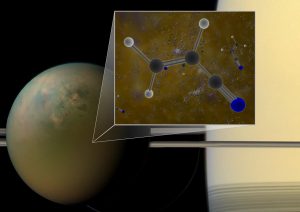
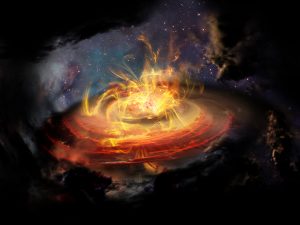
Chaotically Magnetized Cloud Is No Place to Build a Star, or Is It?
For decades, scientists thought that the magnetic field lines coursing around newly forming stars were both powerful and unyielding, working like jail bars to corral star-forming material. More recently, astronomers have found tantalizing evidence that large-scale turbulence far from a nascent star can drag magnetic fields around at will. Now, a team of astronomers using the Atacama Large Millimeter/submillimeter Array (ALMA) has discovered a surprisingly weak and wildly disorganized magnetic field very near a newly emerging protostar, shown here in an artist’s impression. These observations suggest that the impact of magnetic fields on star formation is more complex than previously thought.
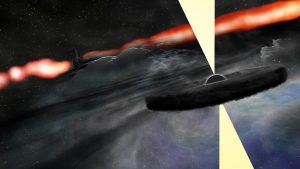
Artist’s Conception of Cygnus A’s Companion
Artist’s conception of newly-discovered secondary supermassive black hole orbiting the main, central supermassive black hole of galaxy Cygnus A.
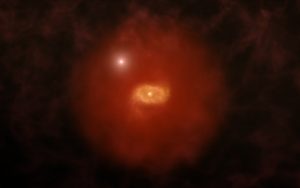
Illustration of a High Redshift Galaxy
Artist impression of a progenitor of Milky Way-like galaxy in the early universe with a background quasar shinning through a ‘super halo’ of hydrogen gas surrounding the galaxy. New ALMA observations of two such galaxies reveal that these vast halos extend well beyond the galaxies’ dusty, star-forming disks. The galaxies were initially found by the absorption of background quasar light passing through the galaxies. ALMA was able to image the ionized carbon in the galaxies’ disks, revealing crucial details about their structures.
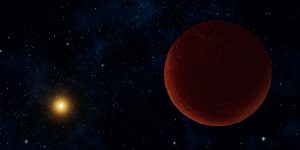
ALMA Investigates ‘DeeDee,’ a Distant, Dim Member of Our Solar System
Artist concept of the planetary body 2014 UZ224, more informally known as DeeDee. ALMA was able to observe the faint millimeter-wavelength “glow” emitted by the object, confirming it is roughly 635 kilometers across. At this size, DeeDee should have enough mass to be spherical, the criterion necessary for astronomers to consider it a dwarf planet, though it has yet to receive that official designation.
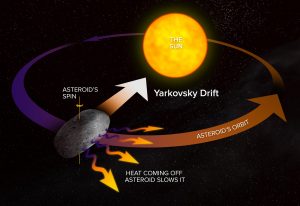
Yarkovsky Effect
Just as the afternoon is the warmest part of the day on Earth, the space rock develops a warm region that radiates infrared light in its maximum amount during afternoon on the asteroid. That outgoing infrared radiation provides a gentle but firm jet-like push to the asteroid. The direction of the asteroid’s spin determines whether “afternoon” is either forward or rearward of its direction of motion. If the hot spot is forward of the direction of motion, the infrared push will slow the asteroid’s orbital speed, and if the hot spot is rearward of the direction of motion, it will speed up the orbital motion. This effect, over time, can make a significant change in the orbit. This is called the Yarkovsky Effect, after the engineer who first identified it.





